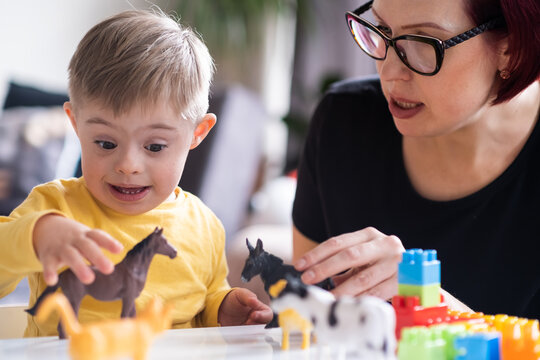Teaching Discipline to Special Needs Kids: Top Tips
Teaching discipline to special needs kids involves understanding their unique needs and creating tailored strategies. Clear expectations and consistent routines provide structure and guidance essential for their success. Positive reinforcement, like rewards and praise, shapes behavior effectively. Seeking professional support for therapy options and behavior management adds valuable insight. Remember, each child is different, so customizing approaches to fit their strengths and challenges is key. Additional tips for teaching discipline to special needs kids can further assist you in supporting their growth and development.
Key Takeaways
- Tailored strategies address individual needs effectively.
- Clear expectations and consistent consequences are essential.
- Implement structured routines and visual schedules.
- Utilize positive reinforcement for shaping behaviors.
- Seek professional support for additional guidance.
Understanding Individual Needs

To effectively teach discipline to special needs kids, it’s important to first understand their individual needs and unique learning styles. Special needs students thrive when they receive personalized strategies that cater to their specific requirements. Differentiated instruction plays a significant role in ensuring that each child receives the tailored approaches they need to succeed.
By creating individualized plans, educators can address the diverse needs of their students effectively. When designing personalized strategies, consider factors such as the student’s strengths, challenges, interests, and preferred learning methods. By taking these aspects into account, you can create a learning environment that’s conducive to their growth and development.
Tailored approaches may include visual aids, hands-on activities, or verbal cues, depending on what resonates best with the student.
Establishing Clear Expectations

Let’s set clear expectations to provide structure and guidance for special needs students as they navigate their learning environment. Establishing clear expectations is vital in helping these students thrive. Consistent consequences play a key role in reinforcing these expectations.
By clearly outlining what behaviors are appropriate and what the consequences will be for both positive and negative actions, you create a predictable environment that special needs students can understand and follow.
Behavior charts can be a helpful tool in this process. They provide a visual representation of expectations and consequences, making it easier for students to track their behavior and understand the outcomes.
When using behavior charts, be sure to keep them simple, specific, and easy to understand for the students.
Implementing Consistent Routines

Establishing a consistent routine can greatly benefit special needs students by providing structure and predictability in their daily activities. When implementing consistent routines, utilizing tools such as behavior charts and visual schedules can be incredibly helpful.
Behavior charts can visually track progress and help students understand expectations. By consistently updating and reviewing these charts with the child, you can reinforce positive behaviors and address any challenges that may arise.
Visual schedules offer a clear outline of the day’s activities, helping students anticipate changes and understand what comes next. Creating visual schedules together with the child allows for customization based on their unique needs and preferences. Be patient and flexible as you introduce these tools, gradually incorporating them into the daily routine.
Consistency is key in helping special needs students adapt to routines, so try to maintain the schedule as much as possible. By establishing predictable patterns and using visual aids, you can create a supportive environment that promotes a sense of security and stability for the child.
Using Positive Reinforcement

Utilize rewards and praise to encourage positive behaviors in special needs children. Behavioral strategies play an important role in shaping behavior, and positive reinforcement is a powerful tool in this regard.
When a child with special needs displays a desirable behavior, such as completing a task or following instructions, immediately praise them and offer a small reward. This positive feedback helps reinforce the behavior and encourages them to continue in the same manner.
Parent involvement is key in implementing effective positive reinforcement strategies. Collaborate with parents to identify what motivates their child and tailor rewards to their preferences.
Consistency is essential in reinforcing positive behaviors, so work together with parents to make sure that the approach is consistent both at home and in other environments. By involving parents in the process, you can create a unified front and increase the likelihood of success in encouraging positive behaviors in special needs children.
Seeking Professional Support
Consider consulting with a professional to gain additional support and expertise when addressing the specific needs of special education students. Parent involvement is vital in this process, as it allows for a holistic approach to developing behavior plans and implementing effective strategies. Professionals can provide valuable insights into therapy options tailored to your child’s unique requirements, offering guidance on how to best support their development.
Behavior plans designed by professionals can offer a structured framework for managing challenging behaviors and promoting positive actions. These plans are often personalized to meet the individual needs of special education students, taking into account their strengths and areas for growth.
Additionally, educational evaluations conducted by experts can help identify specific learning needs and determine the most suitable interventions to support academic progress.
Frequently Asked Questions
How Can I Adapt Discipline Techniques for Non-Verbal Children?
When adapting discipline techniques for non-verbal children, utilize visual cues and reinforcement techniques. Implement communication strategies and focus on positive reinforcement to encourage desired behaviors effectively. Stay patient and adaptive to create a supportive environment for growth.
What Do I Do if a Child’s Behavior Regresses Despite Consistency?
When a child’s behavior regresses despite consistency, it can be challenging. Providing regression support through behavioral strategies is key. Stay patient, reinforce consistency, and consider behavior analysis to adapt your approach and help the child progress positively.
Are There Specific Methods for Children With Sensory Processing Issues?
When supporting kids with sensory processing issues, it’s essential to provide sensory accommodations tailored to each child. Use individualized strategies, positive reinforcement, and visual supports to create a supportive environment that meets their unique needs.
How Can I Address Challenging Behaviors During Transitions?
When addressing challenging behaviors during changes, remember to use behavior redirection and calming strategies. Implement visual schedules and provide sensory breaks to support a smoother shift process for the child with special needs.
What Should I Do if a Child Has a Meltdown During a Routine?
When a child has a meltdown during a routine, focus on de-escalation strategies. Communicate with parents about the incident. Prioritize self-care to stay calm. Remember calming techniques like deep breathing. Consistency and understanding are key.
Conclusion
Remember, teaching discipline to special needs kids requires patience, understanding, and consistency. By taking the time to understand each child’s individual needs, setting clear expectations, implementing routines, using positive reinforcement, and seeking professional support when needed, you can help these children thrive and succeed.
Keep up the great work and remember that every small step forward is a big achievement. Keep adapting and learning as you support these amazing kids on their journey. You’re making a difference!

Chad Adan Kace, a young dad from Vermont, shares his parenting journey with a touch of humor and lots of love. Father to a lively baby, he explores the joys and challenges of fatherhood through his stories.







